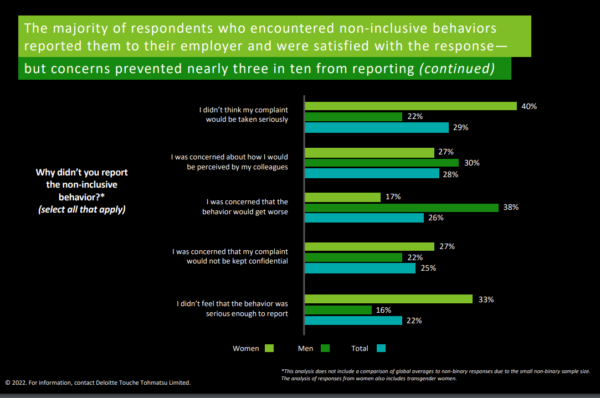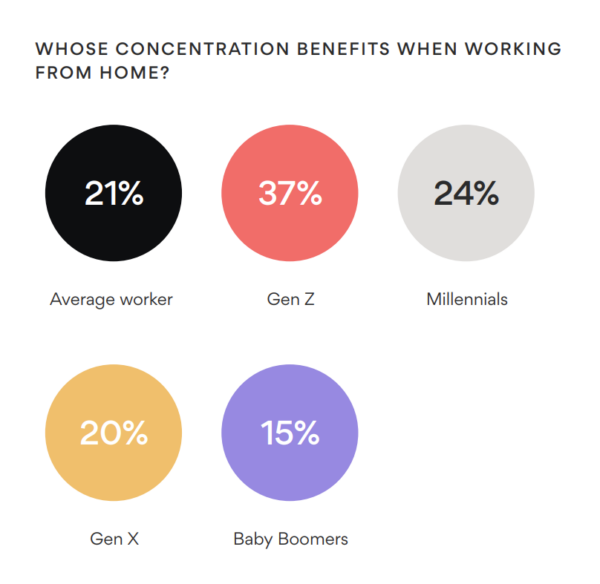LGBTQ+ inclusion helps employee morale, keeping Gen Z workers happy and more
Check out the LinkedIn for shift workers and learn how to support your workforce after the death of a colleague.

Hi there, comms connoisseurs.
Let’s explore some notable stories from June 20-24, 2022 — and pull out a few timely, tactical takeaways along the way:
1. How making efforts to include LGBTQ+ people in the workplace can help employee morale
If your organization has been putting in work to make sure your LGBTQ+ workers feel included — and not just during Pride month, either — then you’ll likely see some positive results. But the work is far from done.
A new report from Deloitte found that 95% of LGBTQ+ employees who reported their employers as having made positive changes to inclusion say it’s led to meaningful support for LGBTQ+ employees across the organization.
One of these positive changes is the existence of LGBTQ+ employee resource groups (ERGs). More than half of survey respondents said belong to an LGBTQ+ ERG at their organization. That number is even higher for employees at global organizations (70%).

(Image)
However, 42% said they’ve experienced non-inclusive behaviors at work, included unwanted comments, jokes at their expense and disparaging comments about gender identity. Seventy-two percent of those who experienced those adverse behaviors reported them to their employers — and those who didn’t cited fears about the complaint not being taken seriously as their main concern.
So how can communicators navigate this complicated topic? If you’re already prioritizing inclusion efforts like ERGs and Pride month messaging, continue to do so and look for other ways to strengthen those efforts.
Ragan’s Allison Carter suggests that education is one of the most powerful ways to foster LGBTQ+ inclusion in the workplace:
Rich Ferraro, chief communications officer for GLAAD, cited the need to have communicators in all aspects of PR, from corporate to agency, who are ready to tell those stories using the power of those institutions. He cited the Edelman Trust Barometer, which for the third year in a row found that brands and companies are more trusted than any other institution.
“We as PR professionals, especially you who are working at big brands, have the power via social media, via public statement, via internal communications, to start telling the truth and start sharing the stories that move the needle on equality. It can change hearts and minds,” Ferraro said.
2. What communicators can do to win over Gen Z workers
If Gen Z is the workforce that will run things in the future, why are they so uncertain about the future of work?New research suggests it might be because Gen Z desires hybrid work more strongly than their older counterparts.
Accord to a new report from Asana, just 55% of Gen Z employees see how their work contributes to larger goals, as compared to an all-employee average of 70%. When you lose that big-picture motivation, it’s easy to become complacent and even bored with the work you’re doing. And the research suggests one thing that might help: increased opportunities for hybrid work.
With hybrid work comes increased concentration benefits for younger people, according to the report. Thirty-seven percent of Gen Z respondents say their concentration would improve if their companies encouraged them to work from home, and nearly 70% of Gen Z say they prefer a hybrid work approach.

“Gen Z’s hybrid work preference could be linked to their understanding of the office versus those generations who spent years commuting to work,” the report says. “Our survey found that these other generations [Gen X, Millennials and Baby Boomers] associate the office with specific types of work, like collaboration and strategy, while Gen Z associates it with social interactions. For them, it’s not so much about what type of work is performed in-office versus at home, but who is in the office.”
Asana suggests that Gen Z prefers workplaces where hybrid work is a possibility — but are also places where there is a low risk that remote and hybrid workers will be inadvertently discriminated against because they’re not working in person.
“Giving everyone the same requirements for office attendance can ensure Gen Z can collaborate with colleagues in person and relieves the pressure for everyone to go into the office more than they’d like,” the report says.
Communicators can help nail down Gen Z’s preferences by surveying your younger workers. Are they satisfied with their work-life balance? Would working remotely help assuage any feelings of burnout? Once you’ve got the numbers, take the data to your C-suite with a plan to help Gen Z workers without singling them out. Remember, it’s about making different groups’ preferences work for everyone.
3. LinkedIn, but for shift workers
A new job search site made specifically for hourly and shift workers has secured more than $50 million in Series B funding — meaning communicators should be on the lookout for the app to gain some traction.
JobGet allows hourly workers to connect with hiring managers over its mobile-first platform, resulting in a process that the company says can mean going from creating a profile to being hired “within hours or even minutes.”
Hourly workers have flocked to JobGet, which has already been downloaded nearly 2 million times and now leads its category in monthly downloads, active users, and user satisfaction according to mobile analytics firms Sensortower and Apptopia.
“Our app is just the beginning. We are building a new type of platform that enables deeper relationships between our talented hourly workers and hiring managers, with intelligent technology connecting both to better opportunities,” said CEO and Co-Founder Tony Liu.
According to JobGet, companies like Home Depot, California Pizza Kitchen and Taco Bell are already using the app.
Comms pros who have been frustrated with using LinkedIn or sites like Indeed to advertise and promote their job openings may find success in using something a little new and different, and by advertising directly to shift and hourly workers, you may be more likely to find exactly who you’re looking for.
4. Helping your workforce through the death of a colleague
When employees die, handling how you tell employees and help them navigate through the ensuing days and months is a delicate process. Any time grief is involved, it’s important that your messaging is unequivocally imbued with sympathy and genuine care.
Here is some advice from pros on ways to help your employees after the death of a colleague:
– Be authentic and honest. “I told my peers that our ‘office mom’ would not be back. But as I watched noses go red and eyes fill up with tears as my staff realized that no one would bring in English Muffins or Entenmann’s treats anymore, I went off script and sobbed through the meeting. My teammate, another manager, held my hand and sobbed with me,” writes Arielle Dance, an integrative women’s health researchers, for the Harvard Business Review. “Grief is a natural stage of life but our society often wants to rush right through it. That day with my staff, I did the opposite.”
– Plan ahead. “If you are a manager, work with your human resources specialists to establish protocols for responding to a worker’s death,” says the American Psychological Association. “Issues to consider include sharing information, handling personal effects, allowing time off for funerals and reassigning space or equipment.”
– Deploy your employee assistance programs. “Any time your employees are impacted to the point where they are not able to function to capacity, it can be helpful to bring in an EAP counselor [or a grief counselor] who can help organizations respond to the death in a timely manner,” says Cheryl Raudenbush, executive director of Mazzitti and Sullivan EAP Service. She told SHRM that EAP counselors can lead employees through specialized group grief processes “that give them the time and space they need to mourn and heal.”
No matter how you go about mourning the death of your colleague and finding ways to remember them, be sure to let their family lead the way in honoring them in a public or significant way.
5. How about some good news?
This week, let’s draw inspiration from:
- The selection of four possible sites for new Smithsonian museums focused on women and Latinos
- New research suggesting Vitamin D could reduce the risk of dementia and strokes
- How the New York Public Library is giving away 500,000 books to city residents this summer
- Ragan Training, which is an incredible resource for communication inspiration and education.
- You also deserve an award. Get your due here!
Take good care of yourselves, comms champions, and keep up the good work.








Re communications around the death of a colleague: at several large companies where I’ve worked, we have taken special care to write a truly meaningful announcement that eulogizes the employee. It also always includes a link where employees can submit condolences or share stories that our internal communications team would then format with the work eulogy and share with the family.